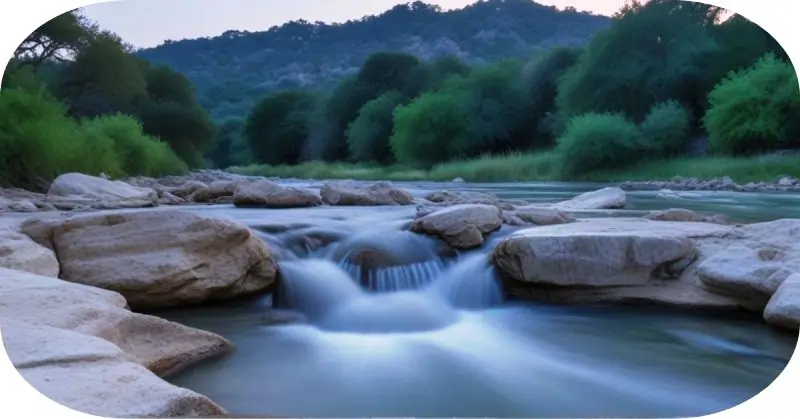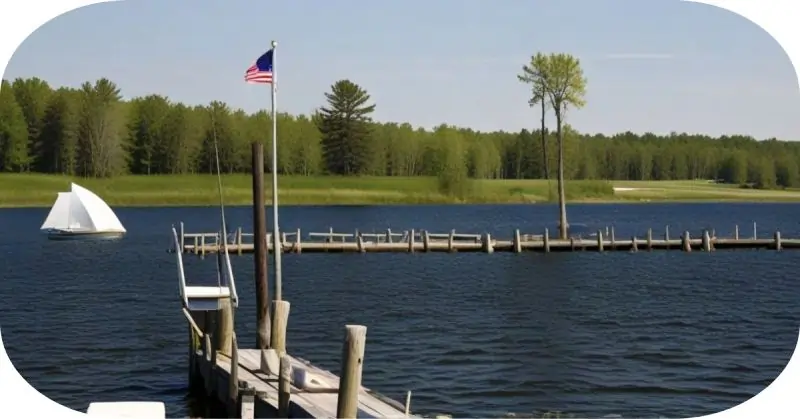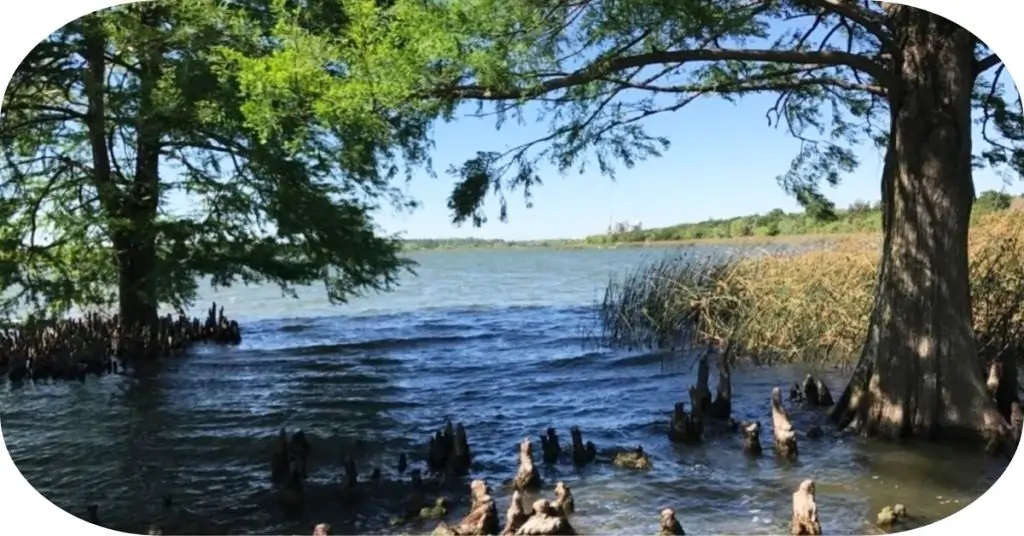Imagine the thrill of lowering your line into the colorful waters of Austin, where every catch offers a fresh adventure. With a wide variety of fishing locations ranging from calm lakes to busy urban ponds, Austin is a fishing haven. Austin offers fisherman several chances to reel in a memorable catch because of its rich biodiversity and beautiful scenery. The top fishing locations in Austin will be revealed, along with professional advice and tactics and a list of must-have local facilities. With this comprehensive book, you’ll be well-prepared for an amazing fishing trip.
Best Fishing Spots Austin
Why Austin is a Fishing Paradise
Natural Beauty and Biodiversity
- Overview of Austin’s Scenic Landscapes
- Diverse Ecosystems: Austin is surrounded by a rich tapestry of ecosystems, including rolling hills, lush forests, and sparkling water bodies. These natural features create picturesque settings for anglers, enhancing the overall fishing experience.
- Scenic Waterways: The city boasts a variety of scenic waterways, from the serene shores of Lady Bird Lake to the expansive vistas of Lake Travis. Each location offers stunning views that make fishing trips not only productive but also visually rewarding.
- Importance of Biodiversity in Austin’s Waters
- Rich Aquatic Life: Austin’s waters are teeming with a diverse range of fish species, including largemouth bass, catfish, sunfish, and more. This biodiversity supports a healthy ecosystem and provides anglers with numerous fishing opportunities.
- Ecosystem Balance: The variety of species contributes to the ecological balance, supporting a robust food chain and maintaining water quality. This biodiversity is crucial for sustaining recreational fishing and preserving Austin’s natural heritage.
Accessibility and Variety
- Easy Access to Fishing Spots Within and Around the City
- Proximity to Urban Areas: Many of Austin’s top fishing spots are conveniently located near urban areas, making them easily accessible for both local residents and visitors. This proximity allows for quick and frequent fishing trips without the need for extensive travel.
- Well-Maintained Facilities: Fishing locations in and around Austin are equipped with well-maintained facilities, including boat ramps, fishing piers, and parking areas. These amenities enhance the convenience and comfort of fishing excursions.
- Variety of Fishing Environments (Lakes, Rivers, Urban Ponds)
- Lakes:
- Lady Bird Lake: Known for its calm waters and urban backdrop, it’s a favorite for kayak fishing and bank fishing.
- Lake Travis: Offers deep, clear waters ideal for bass fishing and boating activities.
- Rivers:
- Colorado River: Provides a mix of fast-flowing and calm sections, perfect for targeting various fish species.
- Barton Creek: A smaller, scenic creek ideal for fly fishing and wade fishing.
- Urban Ponds:
- Mueller Lake Park: An easily accessible urban pond with stocked fish, perfect for family outings.
- Brushy Creek Lake Park: Offers a tranquil setting with well-stocked waters, ideal for beginner anglers.
- Lakes:
Premier Fishing Locations
Lady Bird Lake

- Unique Features
- Urban Oasis: Nestled in the heart of Austin, Lady Bird Lake offers a unique blend of natural beauty and urban convenience. The lake is surrounded by scenic trails and city skyline views, making it a popular spot for both locals and tourists.
- Non-Motorized Zone: The lake is designated for non-motorized boats only, providing a peaceful fishing environment ideal for kayaks, canoes, and paddleboards.
- Common Fish Species
- Largemouth Bass
- Sunfish
- Catfish
- Carp
- Optimal Fishing Times
- Spring and Summer: Early morning and late evening are best for bass and sunfish.
- Fall: Ideal for catfish and carp.
- Winter: Late morning and early afternoon are productive for bass.
- Accessibility and Nearby Amenities
- Access Points: Multiple access points including parks and boat ramps along the shoreline.
- Amenities: Includes picnic areas, restrooms, kayak rentals, and nearby dining options. The Ann and Roy Butler Hike-and-Bike Trail encircles the lake, providing easy access.
Lake Travis

- Unique Features
- Expansive Reservoir: Lake Travis is known for its large size and deep, clear waters, offering excellent conditions for a variety of water activities including fishing, boating, and swimming.
- Scenic Cliffs: The lake is surrounded by picturesque limestone cliffs and rocky shores, adding to its natural allure.
- Common Fish Species
- Largemouth Bass
- Striped Bass
- Catfish
- Sunfish
- Optimal Fishing Times
- Spring: Morning and evening are best for bass.
- Summer: Early morning and late evening are ideal for striped bass.
- Fall: Good for catfish and sunfish.
- Winter: Midday is productive for bass and catfish.
- Accessibility and Nearby Amenities
- Access Points: Numerous parks, marinas, and boat ramps around the lake.
- Amenities: Includes boat rentals, fishing piers, picnic areas, campgrounds, and nearby restaurants.
Lake Austin

- Unique Features
- River-Like Lake: Lake Austin is a long, narrow reservoir that resembles a river, providing a unique fishing experience with a mix of open water and shaded areas.
- Hydroelectric Dam: The lake is regulated by Tom Miller Dam, which helps maintain stable water levels, enhancing fishing conditions.
- Common Fish Species
- Largemouth Bass
- Catfish
- Sunfish
- White Bass
- Optimal Fishing Times
- Spring and Summer: Early morning and late evening are best for largemouth bass and sunfish.
- Fall: Ideal for catfish and white bass.
- Winter: Late morning to early afternoon is productive for bass.
- Accessibility and Nearby Amenities
- Access Points: Several public parks and boat ramps provide easy access.
- Amenities: Includes picnic areas, fishing docks, boat rentals, and nearby cafes and shops.
Barton Creek

- Unique Features
- Scenic Creek: Barton Creek offers a picturesque setting with clear, flowing waters surrounded by lush greenery, making it a favorite spot for nature enthusiasts and anglers alike.
- Popular for Fly Fishing: The creek’s shallow, clear waters are ideal for fly fishing, particularly in its upper reaches.
- Common Fish Species
- Guadalupe Bass
- Sunfish
- Catfish
- Carp
- Optimal Fishing Times
- Spring: Morning and evening are best for Guadalupe bass and sunfish.
- Summer: Early morning is ideal due to cooler water temperatures.
- Fall: Good for catfish and carp.
- Winter: Midday is productive for all species.
- Accessibility and Nearby Amenities
- Access Points: Accessible from several parks and greenbelt areas.
- Amenities: Includes hiking trails, picnic spots, and swimming areas. Limited facilities directly at fishing spots, but nearby parks offer restrooms and parking.
Walter E. Long Lake

- Unique Features
- Power Plant Reservoir: This lake is known for its warm waters due to the adjacent power plant, which provides excellent year-round fishing conditions.
- Large Size: The expansive waters and diverse habitats make it a versatile fishing destination.
- Common Fish Species
- Largemouth Bass
- Hybrid Striped Bass
- Catfish
- Sunfish
- Optimal Fishing Times
- Spring: Early morning and late evening are best for largemouth bass.
- Summer: Ideal for hybrid striped bass and catfish in the morning and evening.
- Fall: Good for sunfish and bass.
- Winter: Midday is productive due to warmer water temperatures.
- Accessibility and Nearby Amenities
- Access Points: Multiple boat ramps and parks provide easy access.
- Amenities: Includes picnic areas, boat rentals, fishing piers, and campgrounds.
Hidden Gems and Local Favorites
Colorado River
- Hidden Spots
- Shoal Creek Confluence: This area, where Shoal Creek meets the Colorado River, is a secluded spot known for its calm waters and excellent fishing opportunities.
- Red Bud Isle: A small, lesser-known island in the river that provides a quiet fishing environment with easy access.
- Festival Beach: Located east of downtown, this area offers a peaceful fishing spot away from the main tourist areas.
- Fish Variety
- Largemouth Bass
- Guadalupe Bass
- Catfish
- Sunfish
- Fishing Tips
- Largemouth Bass: Use soft plastic worms or crankbaits near submerged structures and vegetation.
- Guadalupe Bass: Fly fishing with small poppers or nymphs is highly effective in shallow, rocky areas.
- Catfish: Fish with stink bait or chicken liver near deeper pools and under bridges.
- Sunfish: Use small worms or crickets near grassy banks and under overhanging trees.
Onion Creek
- Hidden Spots
- McKinney Falls State Park: Offers several secluded spots along the creek with easy access to both the upper and lower falls.
- Roy Kizer Golf Course Area: The creek runs adjacent to this area, providing quiet and less-crowded fishing locations.
- Williamson Creek Confluence: A hidden spot where Onion Creek meets Williamson Creek, offering good fishing opportunities.
- Fish Variety
- Largemouth Bass
- Catfish
- Sunfish
- Carp
- Fishing Tips
- Largemouth Bass: Early morning and late evening are best; use spinnerbaits or topwater lures near fallen logs and undercut banks.
- Catfish: Fish with cut bait or nightcrawlers near deeper holes and under overhanging vegetation.
- Sunfish: Use small jigs or live worms near shaded areas and grassy banks.
- Carp: Bread balls or corn work well; fish near the creek’s bends and slow-moving sections.
Lake Walter E. Long
- Hidden Spots
- Eastern Shoreline: Less frequented and offers several coves and inlets with abundant fish.
- Northwest Flats: Shallow, expansive flats that are excellent for wading and kayak fishing.
- Dam Area: The area near the dam provides deep water and is often less crowded, making it a prime spot for fishing.
- Fish Variety
- Largemouth Bass
- Hybrid Striped Bass
- Catfish
- Bluegill
- Fishing Tips
- Largemouth Bass: Use deep-diving crankbaits or Texas-rigged worms near submerged structures and drop-offs.
- Hybrid Striped Bass: Trolling with live shad or jigging with spoons near the deeper channels and dam area.
- Catfish: Fish with cut bait or shrimp near the bottom in deeper water.
- Bluegill: Use small worms or crickets near rocky shores and submerged vegetation.
Seasonal Fishing Insights
Spring Fishing
- Fish Behavior
- Increased Activity: As water temperatures rise, fish become more active, increasing their feeding habits and moving into shallower waters to spawn.
- Spawning Season: Many species, including bass and sunfish, begin their spawning rituals, often found near beds and nests in shallow areas.
- Effective Techniques
- Largemouth Bass: Use spinnerbaits and soft plastic worms near spawning beds and shallow cover.
- Speckled Trout: Employ popping corks with live shrimp or soft plastics around grass flats and estuaries.
- Catfish: Bottom fish with stink bait or cut bait in deeper holes near spawning areas.
- Sunfish: Use small jigs or live worms near grassy banks and shallow nesting areas.
Summer Fishing
- Fish Behavior
- Seeking Cooler Waters: Fish often move to deeper or shaded areas to escape the heat, reducing midday activity.
- Early and Late Feeding: Fish are more active during early morning and late evening when temperatures are cooler.
- Effective Techniques
- Largemouth Bass: Use deep-diving crankbaits or Texas-rigged worms near drop-offs and submerged structures.
- Speckled Trout: Target deeper waters and channels using soft plastics and live bait.
- Catfish: Fish at night with cut bait or chicken liver near deeper channels and under bridges.
- Sunfish: Use small crickets or worms near shaded areas and under docks.
Fall Fishing
- Fish Behavior
- Increased Feeding: As temperatures cool, fish increase their feeding to prepare for winter, becoming more aggressive.
- Migration and Movement: Many species move back to shallower waters, making them more accessible.
- Effective Techniques
- Largemouth Bass: Use spinnerbaits and crankbaits along weed edges and near submerged structures.
- Speckled Trout: Fish with topwater lures or live shrimp in shallower bays and estuaries.
- Catfish: Bottom fish with stink bait or live bait in deeper holes and near drop-offs.
- Flounder: Use finger mullet or soft plastic jigs near sandy bottoms and estuary mouths.
Winter Fishing
- Fish Behavior
- Slowed Activity: Fish metabolism slows, leading to reduced movement and feeding activity.
- Deeper Waters: Fish generally move to deeper, warmer waters to maintain their body temperature.
- Effective Techniques
- Largemouth Bass: Use slow-moving jigs or suspending lures near deep structures and drop-offs.
- Speckled Trout: Fish with soft plastics or slow-moving lures near deeper channels and warmer outflows.
- Catfish: Use cut bait or chicken liver near the bottom in deeper, warmer waters.
- Flounder: Target deeper channels and warmer areas using live bait or scented soft plastics.
Essential Gear and Equipment
Fishing Rods and Reels
- Types and Recommendations
- Spinning Rods and Reels:
- Description: Versatile and easy to use, ideal for beginners and light to medium fishing.
- Recommendations: Medium to medium-light rods with a fast action tip; suitable for targeting bass, trout, and sunfish in Austin’s waters.
- Brands: Shimano, Penn, and Daiwa.
- Baitcasting Rods and Reels:
- Description: Offers greater control and accuracy, preferred for targeting larger fish.
- Recommendations: Medium-heavy rods with a fast action tip; ideal for bass and catfish.
- Brands: Abu Garcia, Lew’s, and Shimano.
- Fly Rods and Reels:
- Description: Designed for fly fishing, providing delicate presentations for lighter baits.
- Recommendations: 5 to 7-weight rods; best for targeting trout, sunfish, and bass in creeks and rivers.
- Brands: Orvis, Sage, and Redington.
- Spinning Rods and Reels:
Bait and Lures
- Best Choices for Austin’s Waters
- Soft Plastic Worms:
- Usage: Effective for bass fishing, particularly around structures and vegetation.
- Types: Texas-rigged, Carolina-rigged, and wacky-rigged.
- Brands: Zoom, Yamamoto, and Berkley.
- Crankbaits:
- Usage: Ideal for covering large areas and targeting active bass.
- Types: Shallow, medium, and deep-diving crankbaits.
- Brands: Rapala, Strike King, and Bomber.
- Topwater Lures:
- Usage: Great for early morning and late evening fishing for bass and trout.
- Types: Poppers, frogs, and walking baits.
- Brands: Heddon, Rebel, and Booyah.
- Live Bait:
- Usage: Highly effective for various species including catfish, trout, and sunfish.
- Types: Shrimp, minnows, nightcrawlers.
- Where to Buy: Local bait shops like Roy’s Bait and Tackle, Red Dot Pier.
- Jigs:
- Usage: Versatile for bass, sunfish, and crappie, effective near structures.
- Types: Swim jigs, finesse jigs, and flipping jigs.
- Brands: Z-Man, Strike King, and Booyah.
- Soft Plastic Worms:
Additional Gear
- Must-Have Accessories
- Tackle Box:
- Features: Multiple compartments for organizing lures, hooks, and tools.
- Recommendations: Plano, Flambeau, and KastKing.
- Fishing Line:
- Types: Monofilament for general use, fluorocarbon for clear water, braid for heavy cover.
- Recommendations: Berkley Trilene, Seaguar, and PowerPro.
- Fishing Net:
- Usage: Essential for safely landing fish, especially larger species.
- Types: Rubber-coated nets to protect fish scales and reduce tangling.
- Brands: Frabill, EGO, and KastKing.
- Polarized Sunglasses:
- Usage: Reduces glare, improves visibility into the water.
- Recommendations: Costa, Oakley, and Smith Optics.
- Cooler:
- Usage: Keeps your catch fresh and stores bait.
- Recommendations: YETI, Igloo, and Coleman.
- Fishing Pliers:
- Usage: Essential for removing hooks and cutting line.
- Recommendations: Rapala, Gerber, and Booms Fishing.
- First Aid Kit:
- Usage: Important for handling minor injuries and emergencies.
- Contents: Bandages, antiseptic wipes, tweezers, and pain relievers.
- Brands: Adventure Medical Kits, Lifeline, and Coleman.
- Sun Protection:
- Items: Sunscreen, hats, and UV-protective clothing.
- Recommendations: Neutrogena, Columbia, and Buff.
- Tackle Box:
Fishing Regulations and Licenses
Local Fishing Regulations
- Catch Limits
- Largemouth Bass:
- Daily Bag Limit: Generally, 5 fish per angler.
- Notes: Only one bass over 21 inches is allowed.
- Catfish:
- Daily Bag Limit: Typically, 25 fish per angler (combined species).
- Notes: Includes channel catfish, blue catfish, and their hybrids.
- Sunfish:
- Daily Bag Limit: No limit, making them a great target for beginners.
- Notes: Includes bluegill, redear, and other sunfish species.
- Crappie:
- Daily Bag Limit: Generally, 25 fish per angler.
- Notes: Includes both black and white crappie.
- Largemouth Bass:
- Size Restrictions
- Largemouth Bass:
- Minimum Size: 14 inches.
- Special Regulations: Check for slot limits on certain lakes.
- Catfish:
- Minimum Size: No minimum size for channel and blue catfish.
- Notes: Check local regulations for any changes.
- Crappie:
- Minimum Size: 10 inches.
- Notes: Ensure accurate measurement to comply with regulations.
- Sunfish:
- Minimum Size: No size restrictions.
- Notes: Ideal for family fishing trips due to lack of restrictions.
- Largemouth Bass:
Obtaining a Fishing License
- Steps to Purchase
- Online:
- Visit TPWD Website: Go to the Texas Parks and Wildlife Department (TPWD) official website.
- Select License Type: Choose the appropriate fishing license (e.g., resident, non-resident, one-day).
- Provide Details: Enter personal information and contact details.
- Payment: Use a credit or debit card to complete the purchase.
- Download or Print: Save a digital copy or print the license for immediate use.
- In Person:
- Retail Locations: Visit local sporting goods stores, bait shops, or major retailers like Walmart and Academy Sports.
- Provide ID: Show identification to verify residency if purchasing a resident license.
- Choose License: Select the desired license type and duration.
- Payment: Pay with cash, credit, or debit card.
- Receive License: Obtain a printed copy of the license on the spot.
- By Phone:
- Call TPWD: Dial the TPWD toll-free licensing number.
- Provide Information: Give personal details and specify the license type.
- Payment: Provide credit or debit card information for payment.
- Receive Confirmation: Note down the confirmation number and wait for the license to be mailed or emailed.
- Online:
- Costs and Validity
- Resident Licenses:
- Annual Fishing License: Approximately $30, valid for one year from the date of purchase.
- One-Day Fishing License: Around $11, ideal for short-term visitors.
- Senior Resident License: Reduced rates for residents aged 65 and older, typically around $12.
- Non-Resident Licenses:
- Annual Fishing License: Approximately $58, valid for one year from the date of purchase.
- One-Day Fishing License: Around $16, suitable for non-residents visiting for a brief period.
- Special Licenses:
- Youth License: Reduced or no-cost licenses for anglers under 17.
- Combination Hunting and Fishing License: Available for those interested in both activities, offering convenience and cost savings.
- Resident Licenses:
Enhancing Your Fishing Experience
Tips from Local Experts
Pro Tips for Success
- Understand Local Conditions:
- Tip: Pay attention to local weather patterns and water conditions. Use weather apps and fishing forecasts to plan your trips.
- Advice: Local expert John D. suggests fishing early in the morning or late in the evening during the hot summer months to avoid the midday heat and increase your chances of a successful catch.
- Choose the Right Bait:
- Tip: Match your bait to the natural prey of the target fish. Use local bait shops to get insights on what’s currently effective.
- Advice: Lisa T., a seasoned angler, recommends using live shrimp for speckled trout in Lady Bird Lake, especially during the spring and fall.
- Explore Different Techniques:
- Tip: Experiment with different fishing techniques such as fly fishing, trolling, or jigging to find what works best in various water bodies.
- Advice: Carlos M., a fishing guide, suggests trying topwater lures at dawn for a thrilling bass fishing experience on Lake Austin.
Community and Events
Fishing Clubs and Tournaments
- Austin Anglers Club:
- Description: A popular local club that offers regular meetings, fishing trips, and educational workshops.
- Benefits: Join for networking opportunities, shared knowledge, and community support.
- Contact: Visit their website or local tackle shops for membership details.
- Texas Bass Fishing Tournaments:
- Description: Regularly held tournaments at Lake Travis and Lake Austin, attracting anglers from across the region.
- Benefits: Compete for prizes, improve skills, and connect with fellow fishing enthusiasts.
- Contact: Check local event listings and fishing forums for upcoming tournament schedules.
- Family Fishing Days:
- Description: Community events often held at local parks and urban ponds, focusing on teaching kids and beginners the basics of fishing.
- Benefits: Great for family bonding, learning, and promoting the sport among youth.
- Contact: Look for announcements on city parks and recreation websites.
Eco-Friendly Fishing Practices
Sustainable Fishing Tips
- Catch and Release:
- Tip: Practice catch and release to maintain fish populations. Use barbless hooks and handle fish carefully to minimize injury.
- Advice: Emily L., an environmental advocate, recommends using rubber nets and wet hands when handling fish to protect their slime coating.
- Minimize Impact:
- Tip: Avoid fishing in sensitive areas like spawning beds and seagrass beds to protect fish habitats.
- Advice: David S., a conservationist, advises maintaining a safe distance from wildlife nesting areas and being mindful of your surroundings.
- Proper Waste Disposal:
- Tip: Dispose of fishing line, bait containers, and other waste properly to prevent pollution and harm to wildlife.
- Advice: Sarah K., a local angler, encourages bringing a small trash bag on every trip to collect and dispose of any litter encountered.
- Use Eco-Friendly Gear:
- Tip: Opt for biodegradable baits and lead-free tackle to reduce environmental impact.
- Advice: Tom H., a sustainable fishing enthusiast, suggests choosing eco-friendly brands and products that support conservation efforts.
Planning Your Trip
Best Times to Fish
Seasonal Highlights
- Spring:
- Overview: Spring offers optimal fishing conditions with moderate temperatures and active fish preparing for spawning.
- Highlights: Early mornings and late afternoons are prime times, especially for bass and trout.
- Tip: Focus on shallow waters and grassy flats.
- Summer:
- Overview: Summer fishing can be challenging due to higher temperatures, but early mornings and evenings remain productive.
- Highlights: Target deeper waters and shaded areas for bass and catfish.
- Tip: Night fishing is effective for catfish.
- Fall:
- Overview: Fall provides excellent fishing opportunities as fish feed aggressively to prepare for winter.
- Highlights: All day fishing is possible, with peak times in the early morning and late afternoon.
- Tip: Look for fish near drop-offs and submerged structures.
- Winter:
- Overview: Winter fishing requires targeting deeper, warmer waters as fish are less active.
- Highlights: Midday fishing is best when water temperatures are highest.
- Tip: Use slow-moving lures and baits.
Weather Considerations
Forecast and Preparation
- Check Weather Reports:
- Tip: Use reliable weather apps or local news sources to check forecasts before your trip.
- Advice: Look for stable weather patterns and avoid days with sudden temperature drops or storms.
- Prepare for Sun Exposure:
- Tip: Wear UV-protective clothing, a hat, and polarized sunglasses.
- Advice: Apply sunscreen with a high SPF rating and reapply every two hours.
- Rain and Wind Preparedness:
- Tip: Bring waterproof gear and be aware of wind conditions that may affect casting and boat stability.
- Advice: Carry a lightweight rain jacket and secure loose items on the boat.
Packing Checklist
Essential Items for a Fishing Trip
- Fishing Gear:
- Rods and Reels: Pack appropriate rods and reels based on target species.
- Tackle Box: Include a variety of hooks, sinkers, lures, and extra line.
- Bait: Bring live bait or artificial lures suited to the local fish.
- Safety and Comfort:
- Life Jackets: Essential for all boat trips.
- First Aid Kit: Include bandages, antiseptic wipes, tweezers, and pain relievers.
- Sunscreen: High SPF sunscreen and lip balm.
- Clothing and Accessories:
- Weather-Appropriate Clothing: Layered clothing for changing conditions.
- Hat and Sunglasses: For sun protection.
- Gloves: Fishing gloves for better grip and protection.
- Tools and Equipment:
- Fishing Pliers: For removing hooks and cutting line.
- Fishing Net: Rubber-coated net for landing fish.
- Cooler: For keeping catch fresh and storing drinks.
- Navigation and Communication:
- Map or GPS Device: For navigation and locating fishing spots.
- Mobile Phone: Fully charged with a waterproof case.
- Emergency Whistle: For safety.
- Food and Hydration:
- Water Bottles: Bring enough water to stay hydrated.
- Snacks and Meals: Non-perishable snacks and easy-to-eat meals.
- Miscellaneous:
- Trash Bags: For waste disposal and keeping the environment clean.
- Towel: For drying hands and gear.
- Camera: To capture memorable catches and scenic views.
FAQ on “Best Fishing Spots Austin”
Q: What is the best spot for bass fishing in Austin?
A: Lake Travis is highly recommended for excellent bass fishing.
Q: Where can I fish in downtown Austin?
A: Lady Bird Lake offers great fishing opportunities right in downtown Austin.
Q: Which spot is ideal for family-friendly fishing?
A: Mueller Lake Park is perfect for family-friendly fishing outings.
Q: What’s a good location for fly fishing in Austin?
A: Barton Creek is an excellent spot for fly fishing enthusiasts.
Conclusion
The greatest places to fish in Austin have been identified in this comprehensive guide, which includes both the picturesque Lake Travis and the urban haven of Lady Bird Lake. To improve your fishing experience, we’ve offered crucial equipment suggestions, professional advice, and a list of important spots. Regardless of your level of experience, Austin’s varied waters offer thrilling and unforgettable experiences. So gather your gear, check out these top locations, and immerse yourself in Austin’s thriving fishing scene. Don’t forget to subscribe for more updates and advice and to share this guide with other fishing enthusiasts!
